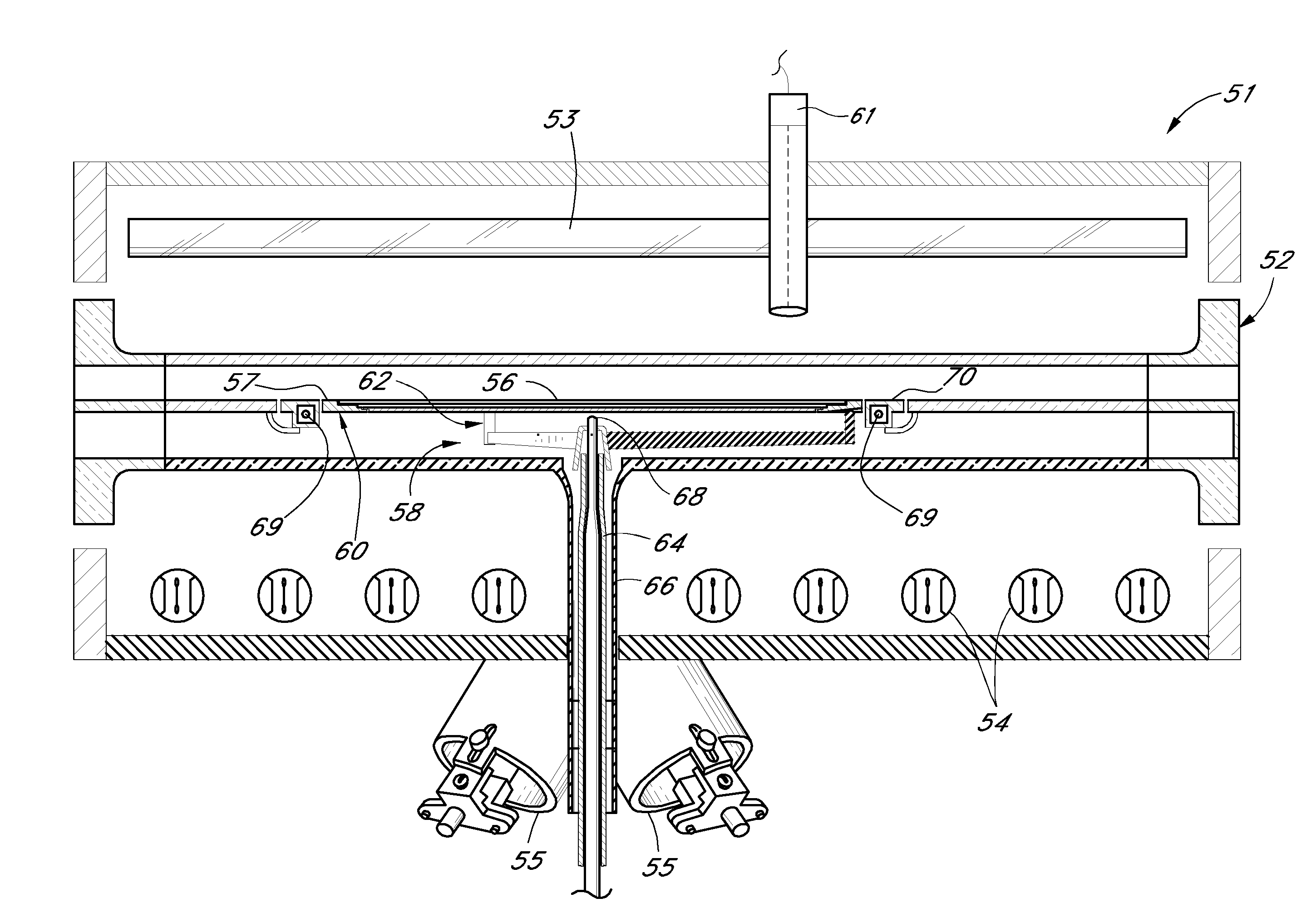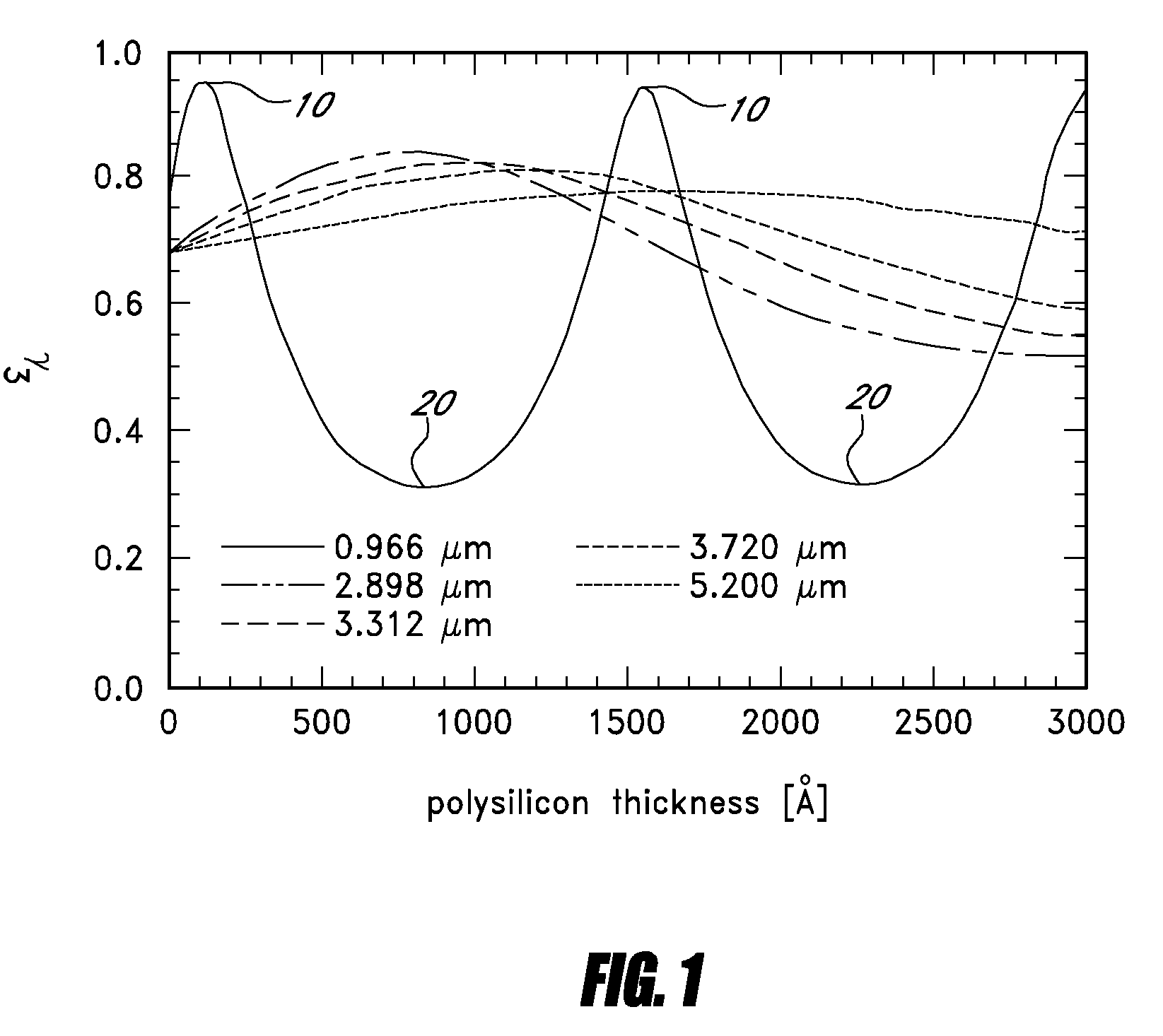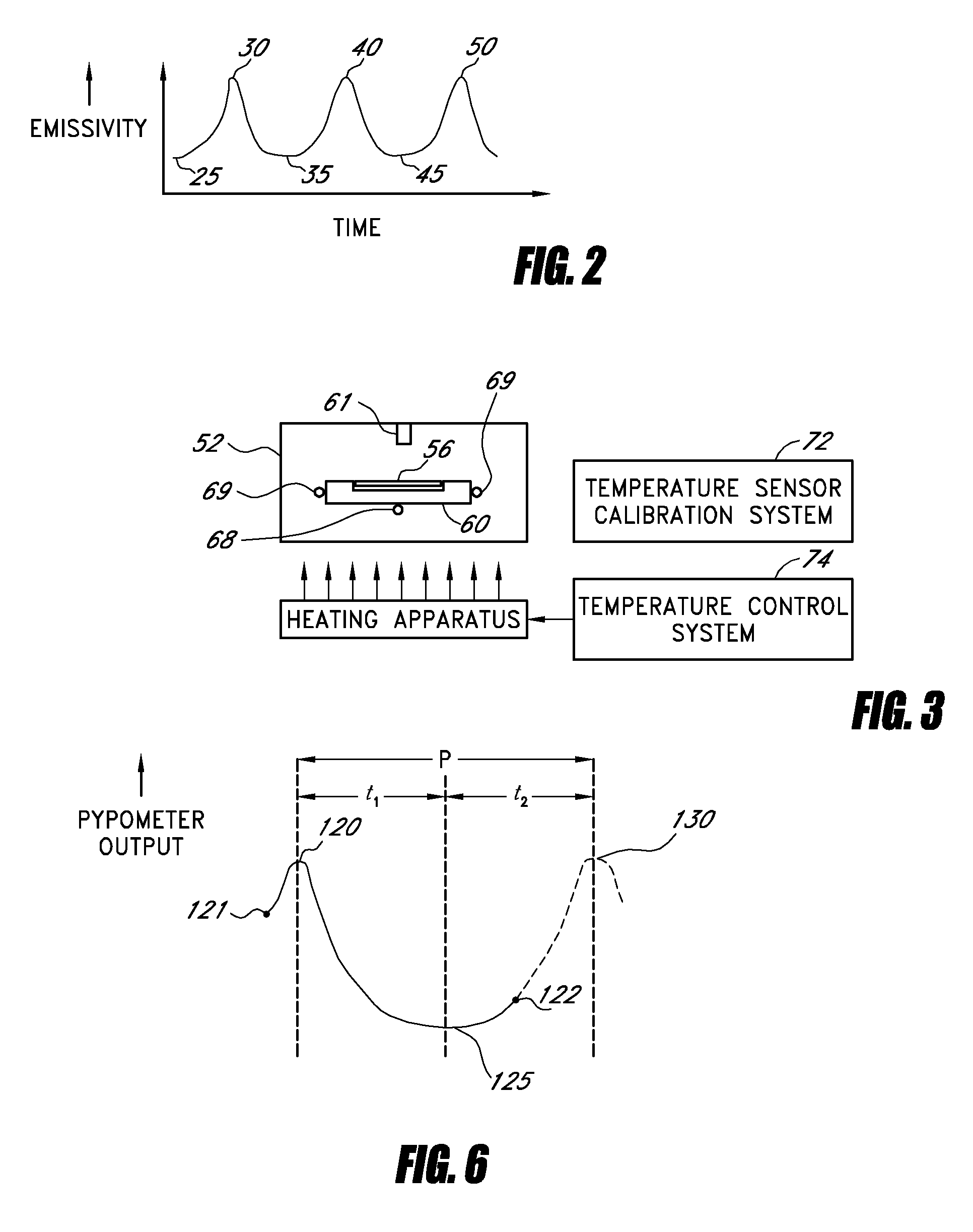Calibration of temperature control system for semiconductor processing chamber
a temperature control system and substrate technology, applied in semiconductor/solid-state device testing/measurement, instruments, heat measurement, etc., can solve the problems of inaccuracy of temperature readings, significant change in deposition rate, and undesirable or non-uniform layer thickness,
- Summary
- Abstract
- Description
- Claims
- Application Information
AI Technical Summary
Benefits of technology
Problems solved by technology
Method used
Image
Examples
Embodiment Construction
[0029]The present inventors have recognized that, within certain film thickness ranges, certain properties of a deposited film vary cyclically with the film thickness. Such properties are referred to herein as “cyclical properties.” Two such cyclical properties are the film's color and emissivity. For example, the color of a silicon film deposited onto a 1000 Angstrom silicon dioxide layer coating a silicon wafer has been observed to vary as follows:[0030]Blue (this is the base color of the 1000 Angstrom oxide)[0031]Silver (200-300 Angstroms; only seen once as the polysilicon thickens)[0032]Gold (400 Angstroms)[0033]Blue[0034]Green[0035]Gold[0036]Then the above colors repeat (except blue and silver every 500 Angstroms until the layer reaches a certain thickness, such as approximately 4000 Angstroms)
[0037]Similarly, the emissivity of a deposited layer varies cyclically with layer thickness as well. FIG. 1 is a graph showing the emissivity variation as a function of layer thickness at...
PUM
 Login to View More
Login to View More Abstract
Description
Claims
Application Information
 Login to View More
Login to View More - R&D
- Intellectual Property
- Life Sciences
- Materials
- Tech Scout
- Unparalleled Data Quality
- Higher Quality Content
- 60% Fewer Hallucinations
Browse by: Latest US Patents, China's latest patents, Technical Efficacy Thesaurus, Application Domain, Technology Topic, Popular Technical Reports.
© 2025 PatSnap. All rights reserved.Legal|Privacy policy|Modern Slavery Act Transparency Statement|Sitemap|About US| Contact US: help@patsnap.com



